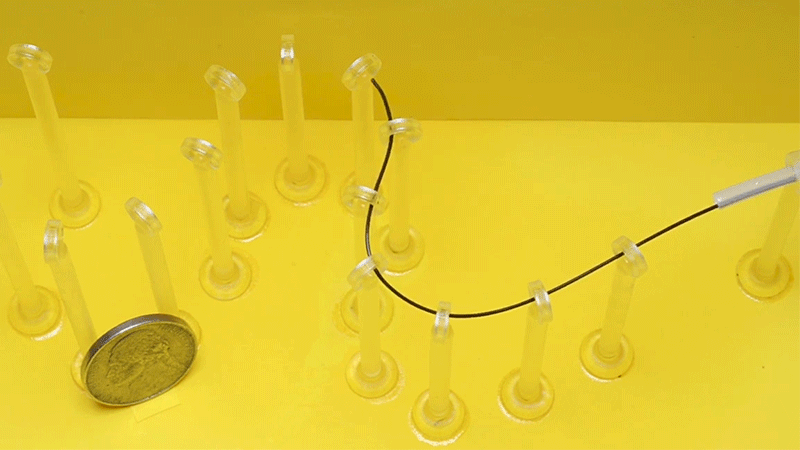This Robotic Worm Can Be Guided Through The Human Brain
Dhir Acharya - Aug 31, 2019

MIT robotics engineers have created a robot worm which they can magnetically steer to skillfully navigate through arterial pathways in the human brain.
- Cafe In Tokyo With Robot Waiters Controlled By Disabled Staff
- This $333,000 Robot Kitchen Can Cook 5,000 Recipes From Scratch
- This Robotic Gripper Wraps Around Objects Like An Elephant Trunk
MIT robotics engineers have created a robot worm which they can magnetically steer to skillfully navigate through winding and extremely narrow arterial pathways in the human brain. It can one day serve in clearing blockages as well as clots contributing to aneurysms and strokes. Meanwhile, it could also be the next big leap in robotic evolution.

While strokes are the biggest cause of disability and death in the US, but we can increase patients’ survival rates significantly by relieving blockages in blood vessels within the first 1.5 hours of treatment. However, this process is complicated that requires skilled surgeons to guide a thin wire manually through the arteries in a patient up into a damaged vessel in the brain, then a catheter could deliver treatments or retrieve a clot.
It’s not just that these wires can damage vessels linings when they travel through the patient’s body, but surgeons are also exposed to a high level of radiation generated from a fluoroscope guiding them by producing real-time X-ray images. There’s still a long way to go.
The engineers at MIT, with their expertise in using magnets for manipulating simple machines and in water-based biocompatible hydrogels, developed a robotic worm which houses a pliable titanium-nickel alloy core featuring memory shape characteristics so it will return to the original shape when it’s bent. The engineers coated the core in a paste of rubber embedded with magnetic particles and then wrapped those particles in a layer of hydrogels which lets the robotic worm glide through blood vessels and arteries without causing any damage.

The team tested the robot on a small course of obstacles with several small rings forming a twisting path, the team guided the robot with a strong magnet that could work at a distance long enough for placing outside the patient. Plus, the engineers mocked up a replica at life-size of the blood vessels in the brain, they found that the robot could not only navigate through the obstacle easily but it may also be upgraded with additional tools such as a mechanism to deliver clot reducing drugs. Moreover, they succeeded in replacing the metal core of the robotic worm with an optical cable, which means when it got to the destination, it could deliver laser pulses to remove a blockage.
The robot would speed up the procedure after strokes, decrease radiation exposure on surgeons. Additionally, although the worm was tested with manual operation of the magnet, eventually, there will be machines to control the magnet with higher accuracy, hence improve and speed up the robot’s journey through the patient’s body.
Featured Stories

Features - Jul 01, 2025
What Are The Fastest Passenger Vehicles Ever Created?

Features - Jun 25, 2025
Japan Hydrogen Breakthrough: Scientists Crack the Clean Energy Code with...

ICT News - Jun 25, 2025
AI Intimidation Tactics: CEOs Turn Flawed Technology Into Employee Fear Machine

Review - Jun 25, 2025
Windows 11 Problems: Is Microsoft's "Best" OS Actually Getting Worse?

Features - Jun 22, 2025
Telegram Founder Pavel Durov Plans to Split $14 Billion Fortune Among 106 Children

ICT News - Jun 22, 2025
Neuralink Telepathy Chip Enables Quadriplegic Rob Greiner to Control Games with...

Features - Jun 21, 2025
This Over $100 Bottle Has Nothing But Fresh Air Inside

Features - Jun 18, 2025
Best Mobile VPN Apps for Gaming 2025: Complete Guide

Features - Jun 18, 2025
A Math Formula Tells Us How Long Everything Will Live

Features - Jun 16, 2025
Comments
Sort by Newest | Popular